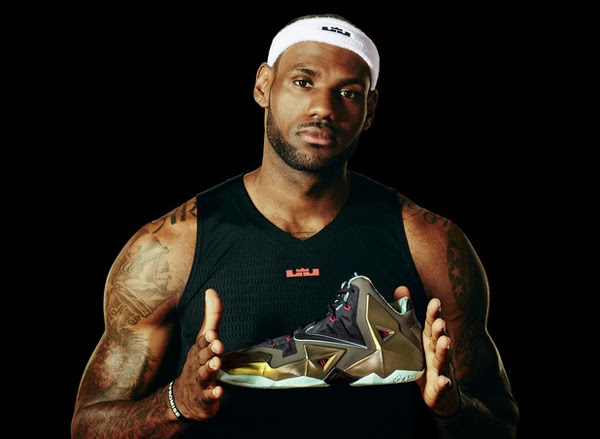Well, all that changed. Celebrities found that endorsements were an easy income-stream and a lot easier than an acting gig: lend his or her name to the product, pose for a couple of ads, maybe show up at some retail events, drinks with the agency after the shoot. Then the checks rolled in. Anyway, it turned out it was easier for the companies to hire a celebrity to stand next to their products and have the product leech some sort of borrowed equity from the celebrity than to actually create a real and resonating brand on their own. To be fair, it was always really hard to create a brand that was known for something beyond, well, just being known and being ubiquitously available, and over the years, things just gotten harder. Nowadays it’s near impossible. By the way, when we say “celebrity” we’re talking about entertainers and actors, and movie stars. That kind of celebrity.
In sports, professional athletes – today, perhaps, bigger celebrities than celebrities are celebrities – always seemed to have been immune from the taint that came with commercializing their talents and product endorsements. Derek Jeter carried VISA, Pele recently signed with Subway. Reggie White slurps for Campbell’s Chunky soup. This isn’t a modern phenomenon. “Joltin’” Joe DeMaggio sold Mr. Coffee machines and the great Yogi Berra asked America wasn’t “it time for Yoo-Hoo?” Oh, and Joe Namath wore panty hose. The trick was to find an athlete where there was some kind of “fit” (no pun intended) between the product and the athlete, where an emotional connection could be made.
It seems to work better with athletes than it does with movie stars who are supposed to be able to act any way the script goes, but there you are! And nowhere has the success of this approach been as obvious as it has in the sports apparel category – particularly for athletic shoes. Think Michael Jordan and Kobe Bryant for Nike. Then there’s Allen Iverson for Reebok. And Derrick Rose for Adidas. All lucrative for the athletes. But as expensive as they may seem, high-profile endorsements work really well in this category.
There’s an emotional connection that fans make when they see their sport heroes endorsing a line of shoes. It’s something that they both physically and emotionally identify with. Maybe they even think in their heart of hearts that the equipment will help them play a bit better. Maybe not. But consumers always seem to walk a bit taller and jump a bit higher when they get their hands on the season’s newest models. They certainly claim bragging rights.
Nike came out with their new $200+ LeBron-11 basketball shoes in October, calling them “one of the most innovative Nike basketball shoes to date. . . “ And while fans have been thrilled, one wonders about Mr. James. Apparently in 18 games played since the season opener, Mr. James has only worn the new LeBron-11’s for only two complete games. A few times Mr. James started the game with the 11’s but then switched back to last season’s X model. So what are fans to think when the guy with his name on the shoe, isn’t wearing the shoe? What’s a sponsor to think?
Here’s what one sponsor did when the celebrity wouldn’t wear the product. Swiss watchmaker, Raymond Weil, accused Actress Charlize Theron of two- timing them after Ms. Theron was seen wearing a Christian Dior watch in a perfume ad. And at the SXSW film festival and in an ad for an AIDS charity. So they sued her for breach-of-contract. Ms. Theron explained it was all just an oversight and eventually settled with her sponsor. Sorry, no terms were disclosed.
Well, Mr. James didn’t wear a competitor’s shoe, but apparently the new 11’s don’t fit him so well. He was quoted as saying, “I just want to be able to wear them. It has been a frustrating process. But obviously I know that Nike wants to do what’s best. They’re not going to put me out there in harm’s way. So we’re redefining the shoe to fit what’s best for my foot and I feel like this next round is going to be perfect.”
The bottom line? That would be exactly what you want from your shoes and your celebrity endorsers – the perfect fit.
Connect with Robert on LinkedIn.
Find out more about what makes customer loyalty happen and how Brand Keys metrics is able to predict future consumer behavior: brandkeys.com. Visit our YouTube channel to learn more about Brand Keys methodology, applications and case studies.
Share this:

